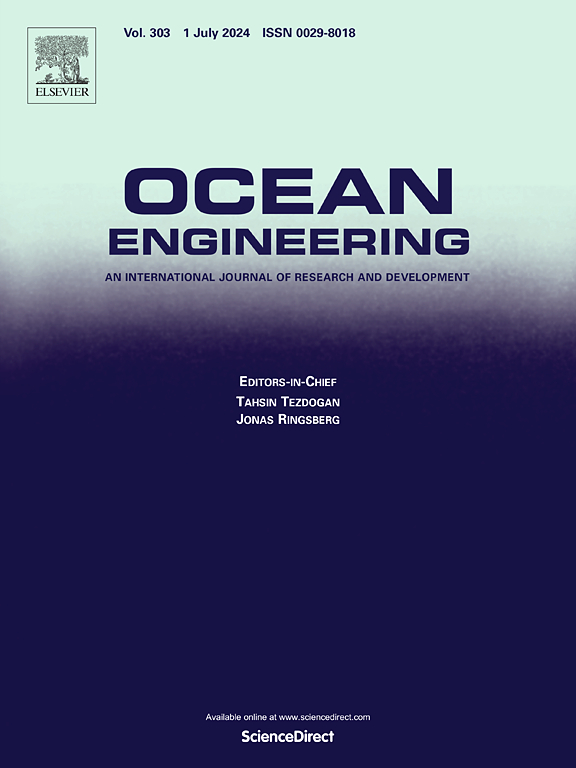Investigation on the influence of the adjacent shoreline topography on harbor oscillations
IF 4.6
2区 工程技术
Q1 ENGINEERING, CIVIL
引用次数: 0
Abstract
In the realm of harbor oscillation studies, low-frequency (1/500–1/30 Hz) oscillations are of particular concern. These oscillations have the potential to induce excessive motions in moored vessels, resulting in disruption of maritime docking and navigation, and even casualties. To address the operational challenges associated with low-frequency harbor oscillations, extensive numerical simulations are carried out in this study to explore the influence of adjacent shoreline topographies on long-wave-induced harbor oscillations. By integrating wave surface elevations in the time and frequency domains, wave energy distributions at various frequencies for harbors with different adjacent boundaries are identified. The spatial distribution features of the first four resonant modes are examined through an improved linear wave model. Then, the band-pass filtered surface elevations of a cross-section close to the dock for harbors with different layouts at various frequency bands are compared and analyzed utilizing the FUNWAVE-TVD wave model. The results indicate that the harbor with an adjacent slope boundary is safer than the harbor with a vertical revetment on the adjacent slope boundary in terms of low-frequency harbor oscillations. Finally, the impact of the incident significant wave height on infragravity waves inside the harbor under different adjacent boundary conditions is explored.
求助全文
约1分钟内获得全文
求助全文
来源期刊

Ocean Engineering
工程技术-工程:大洋
CiteScore
7.30
自引率
34.00%
发文量
2379
审稿时长
8.1 months
期刊介绍:
Ocean Engineering provides a medium for the publication of original research and development work in the field of ocean engineering. Ocean Engineering seeks papers in the following topics.
 求助内容:
求助内容: 应助结果提醒方式:
应助结果提醒方式:


